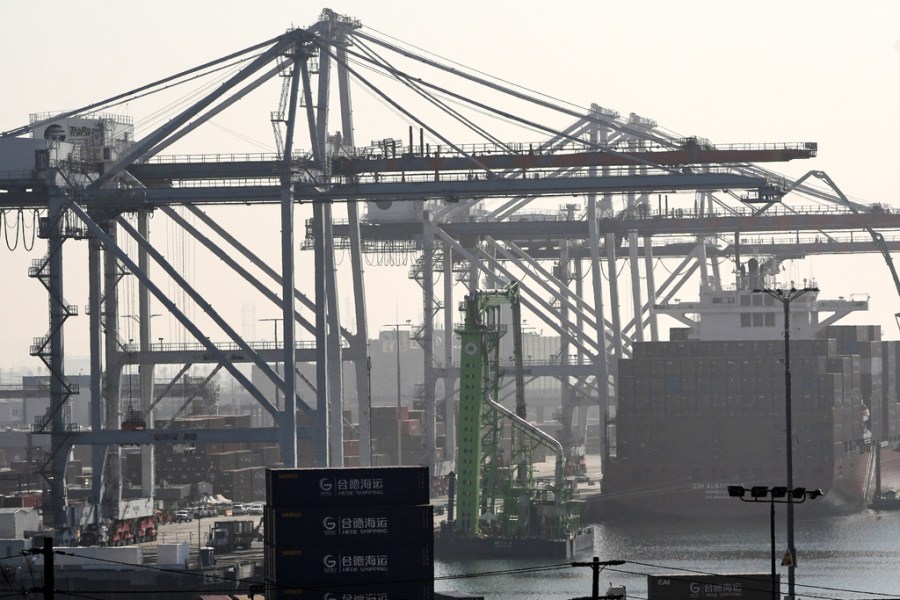World
US and China Raise Port Fees, Escalating Trade Tensions

The United States and China have intensified their trade dispute by imposing additional port service fees and tariffs on each other’s goods. This escalation, which came into effect on March 15, 2024, threatens to disrupt global trade, leading to higher shipping costs, reduced trade volumes, and potential job losses in both countries.
The United States announced a new port service fee amounting to approximately $2 billion annually, targeting Chinese imports. This decision follows China’s earlier imposition of tariffs on US goods, which has reportedly cost American exporters around $3 billion since the beginning of 2024. The moves have raised concerns among international trade experts and industry leaders about the long-term implications for the global economy.
Impact on Global Trade and Economy
As shipping costs rise, the repercussions are likely to be felt across various sectors. According to the World Trade Organization (WTO), increased tariffs can lead to a contraction in trade, with potential decreases in global GDP growth. Analysts predict that these new fees may result in higher consumer prices, as importers pass on costs to consumers. The Port of Los Angeles, one of the busiest ports in the US, could become a critical point of contention as costs increase and shipping delays worsen.
The trade tensions have also sparked fears of job losses. The American trucking and logistics industries, heavily reliant on the smooth flow of goods, could face significant disruptions. “If we continue down this path, we risk jeopardizing thousands of jobs,” said Mark Johnson, a spokesperson for the National Trucking Association.
Political Context and Future Prospects
These developments come amid ongoing diplomatic efforts to resolve broader trade issues between the two nations. The Biden administration has emphasized the need for a balanced and fair trade relationship, while Chinese officials have expressed their frustration over what they perceive as aggressive trade policies. Both countries are under pressure to negotiate a resolution that would stabilize trade relations and restore confidence in global markets.
The situation remains fluid, with potential for further escalation or, conversely, diplomatic breakthroughs. Economists warn that continued tensions could lead to a protracted period of instability in international trade. As negotiations unfold, stakeholders in both countries are closely monitoring developments, hoping for a return to a more amicable trade environment.
In summary, the implementation of new port fees and tariffs by the United States and China marks a significant escalation in their trade dispute. The economic impacts of these decisions could be profound, affecting consumers, industries, and economies worldwide. With both sides at an impasse, the future of Sino-US trade relations hangs in the balance.
-

 Science4 weeks ago
Science4 weeks agoALMA Discovers Companion Orbiting Giant Red Star π 1 Gruis
-

 Politics2 months ago
Politics2 months agoSEVENTEEN’s Mingyu Faces Backlash Over Alcohol Incident at Concert
-

 Top Stories2 months ago
Top Stories2 months agoNew ‘Star Trek: Voyager’ Game Demo Released, Players Test Limits
-

 World2 months ago
World2 months agoGlobal Air Forces Ranked by Annual Defense Budgets in 2025
-

 World2 months ago
World2 months agoMass Production of F-35 Fighter Jet Drives Down Costs
-

 World2 months ago
World2 months agoElectrification Challenges Demand Advanced Multiphysics Modeling
-

 Business2 months ago
Business2 months agoGold Investment Surge: Top Mutual Funds and ETF Alternatives
-

 Science2 months ago
Science2 months agoTime Crystals Revolutionize Quantum Computing Potential
-

 Top Stories2 months ago
Top Stories2 months agoDirecTV to Launch AI-Driven Ads with User Likenesses in 2026
-

 Entertainment2 months ago
Entertainment2 months agoFreeport Art Gallery Transforms Waste into Creative Masterpieces
-

 Business2 months ago
Business2 months agoUS Government Denies Coal Lease Bid, Impacting Industry Revival Efforts
-

 Health2 months ago
Health2 months agoGavin Newsom Critiques Trump’s Health and National Guard Plans









